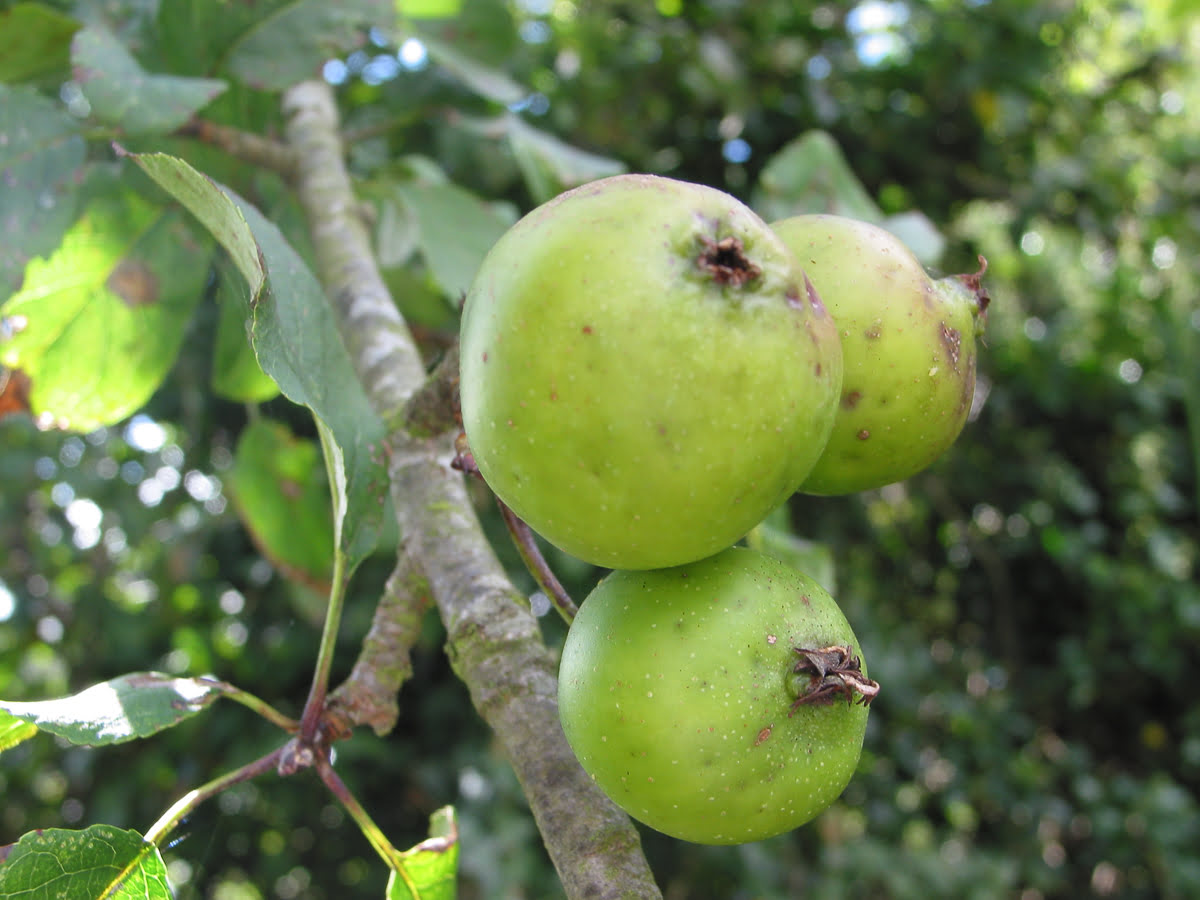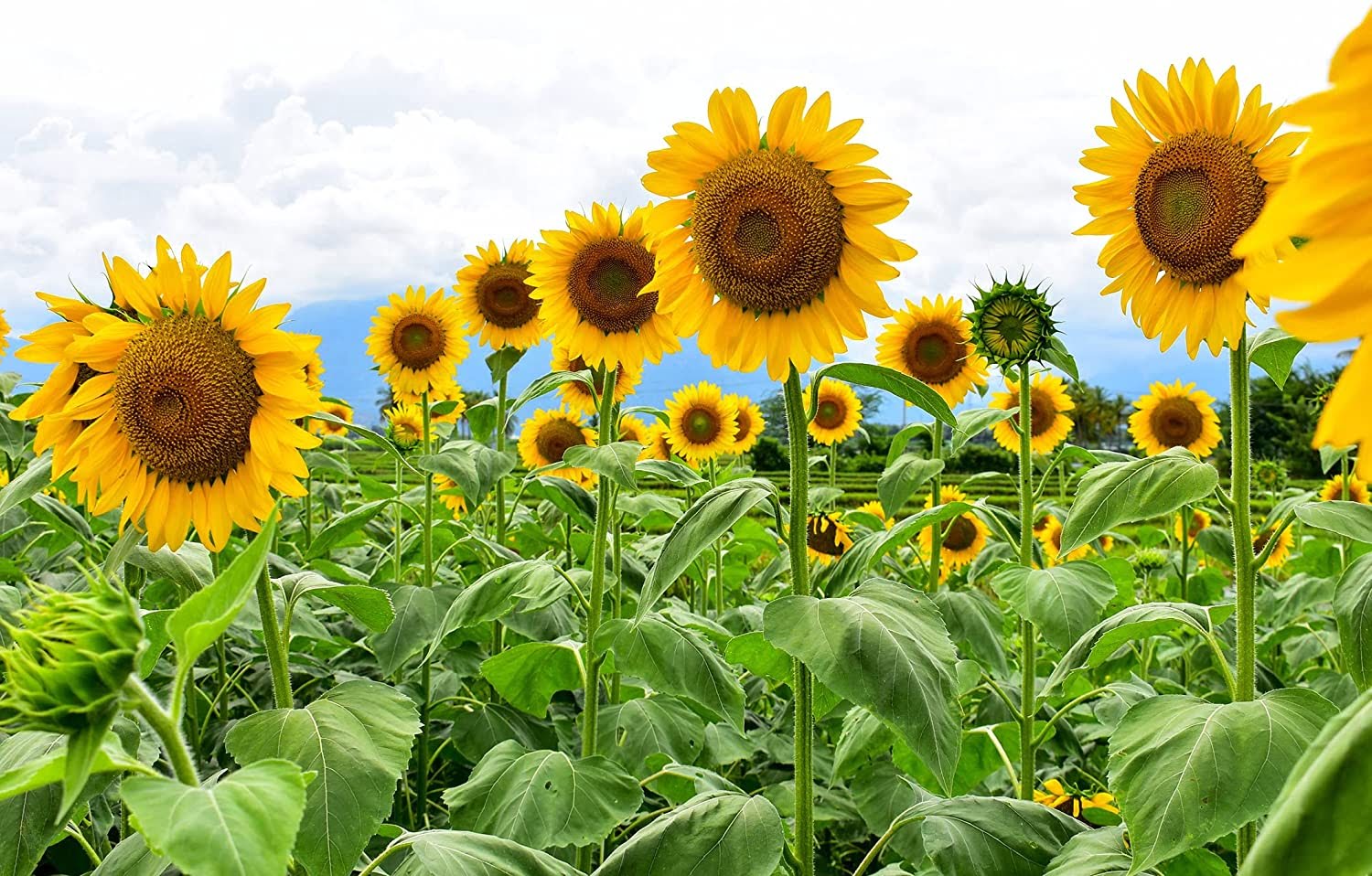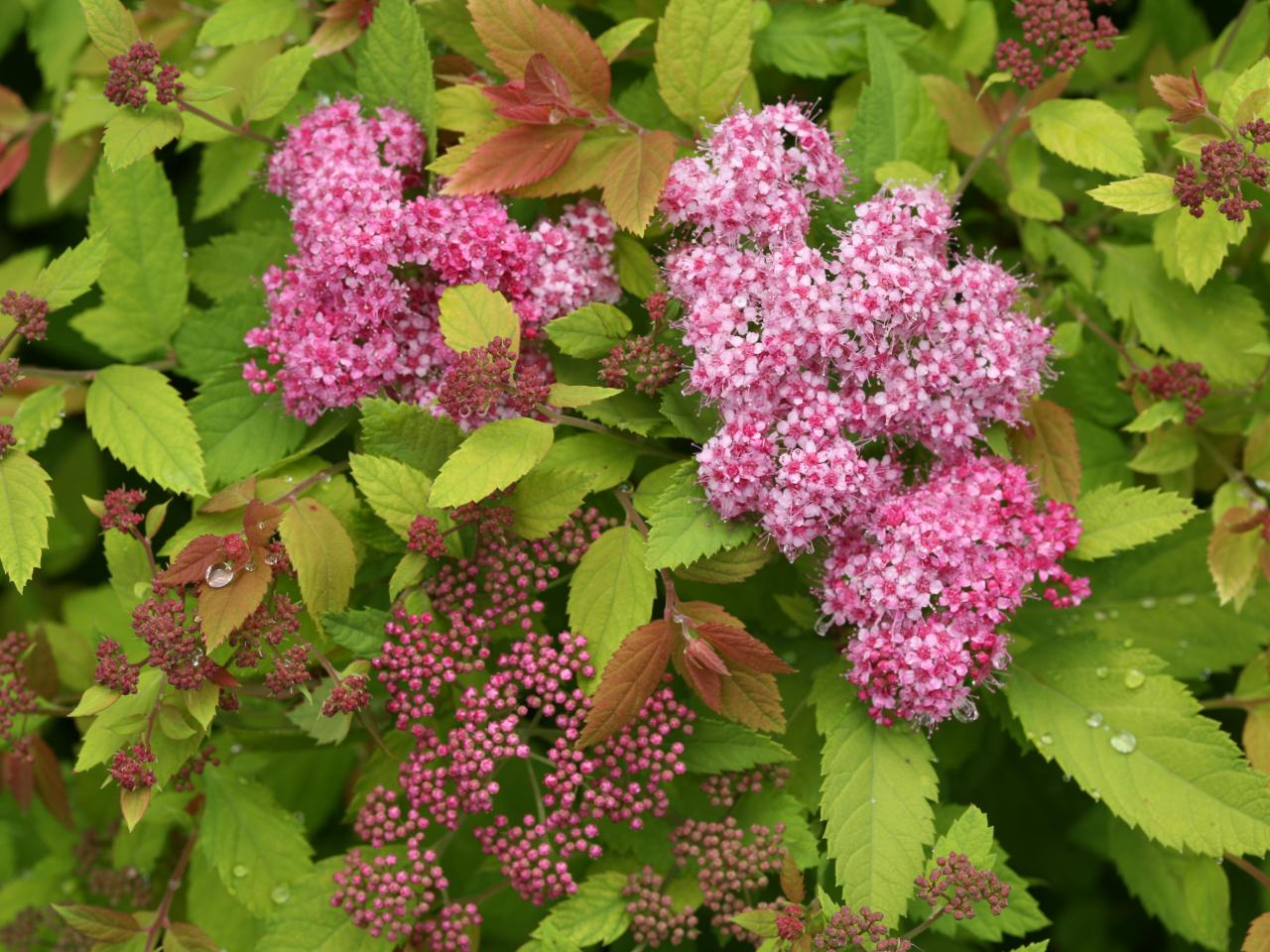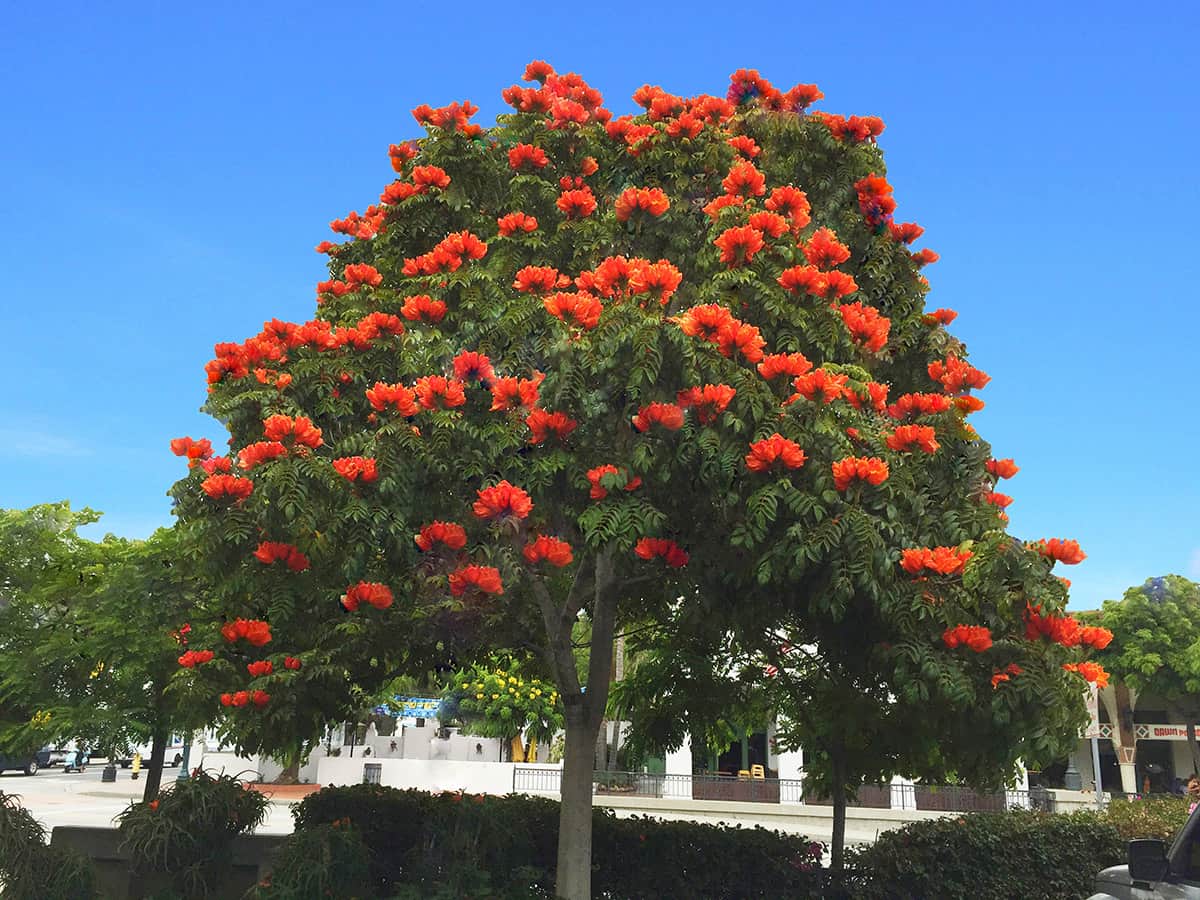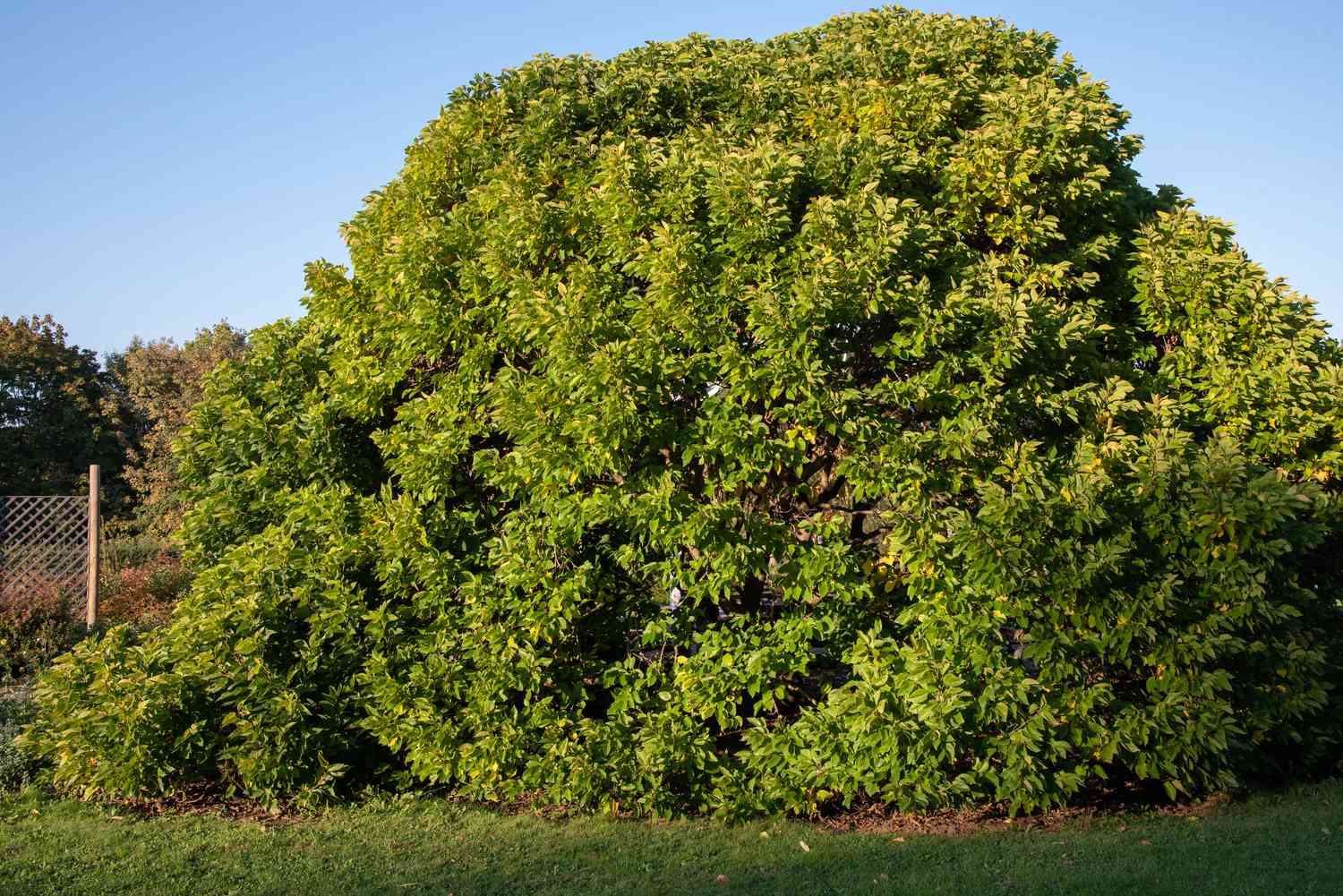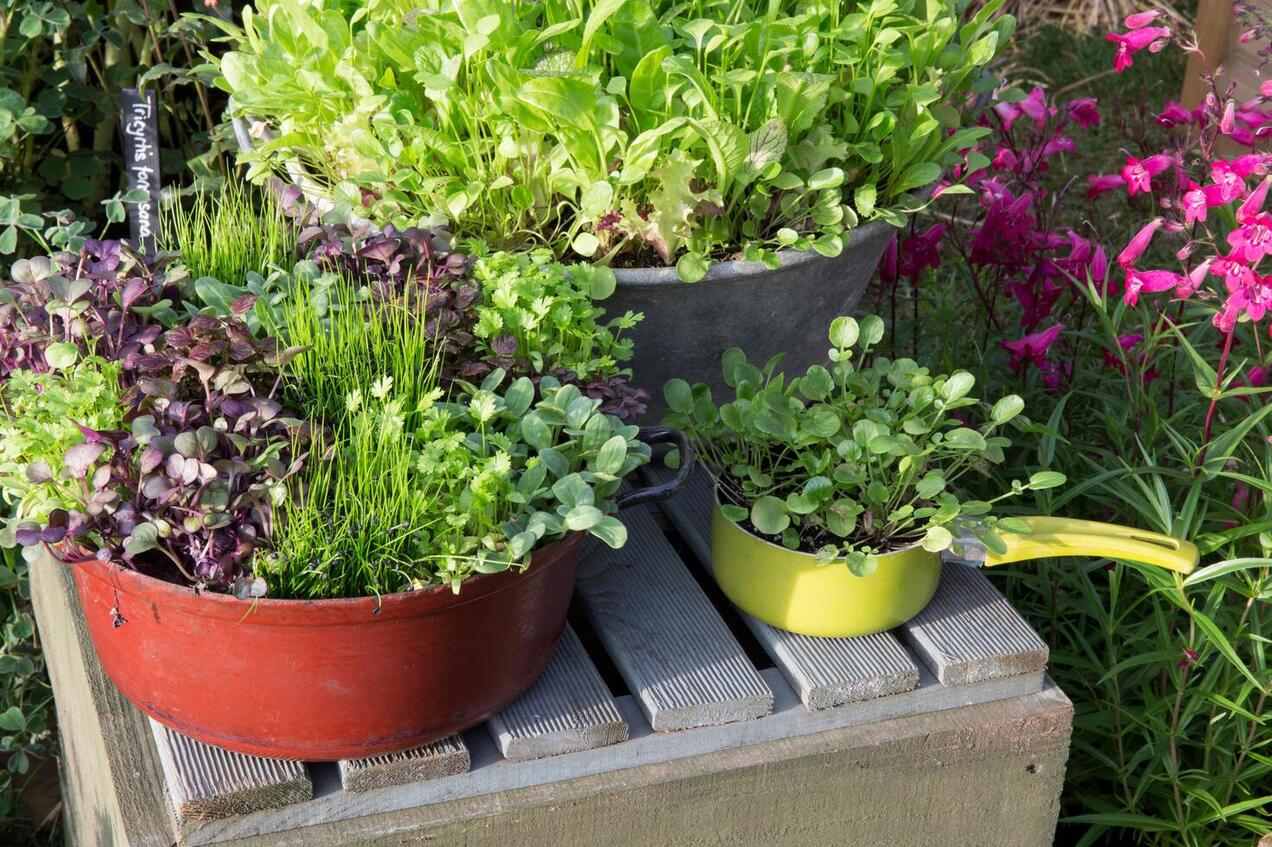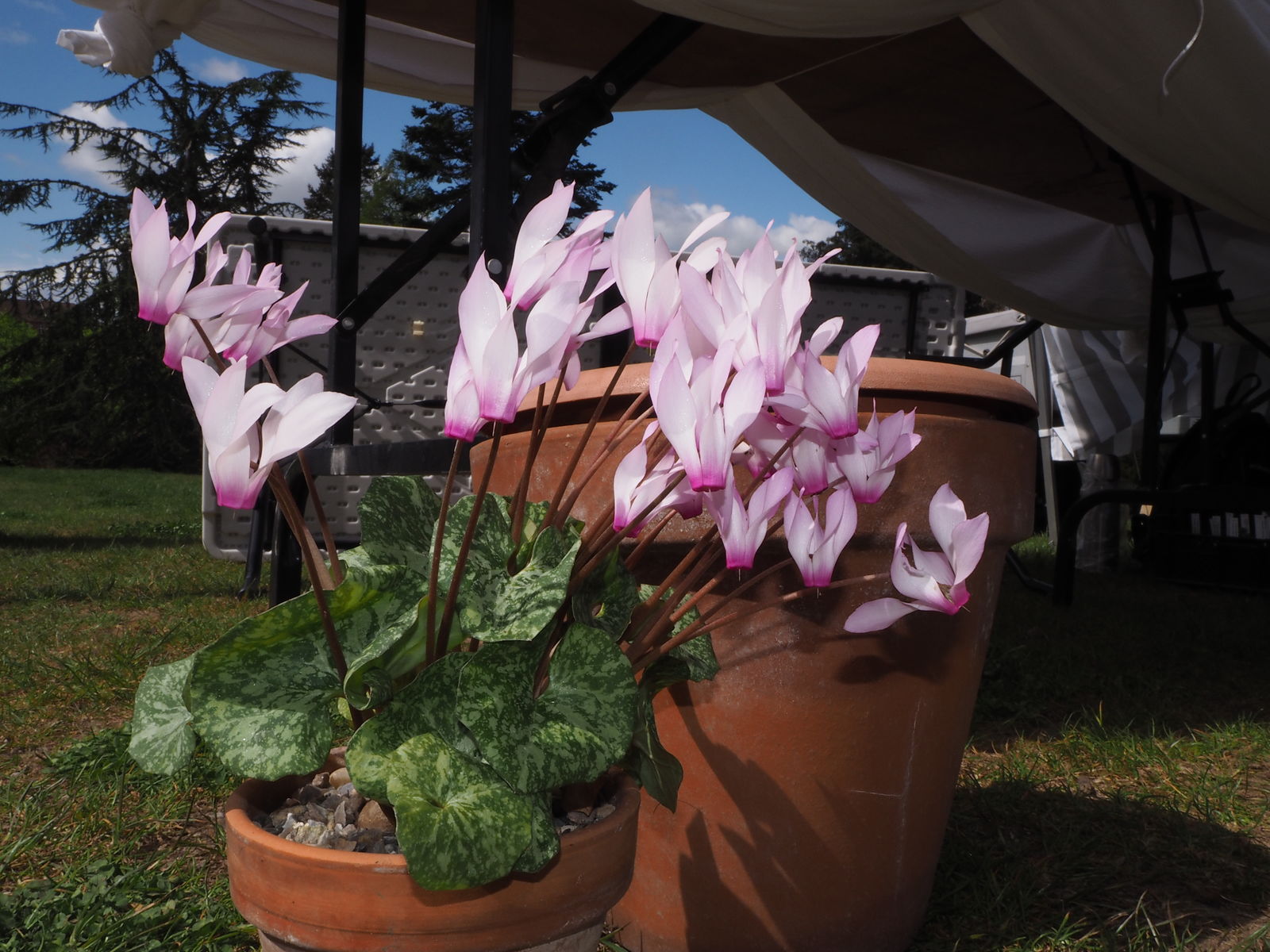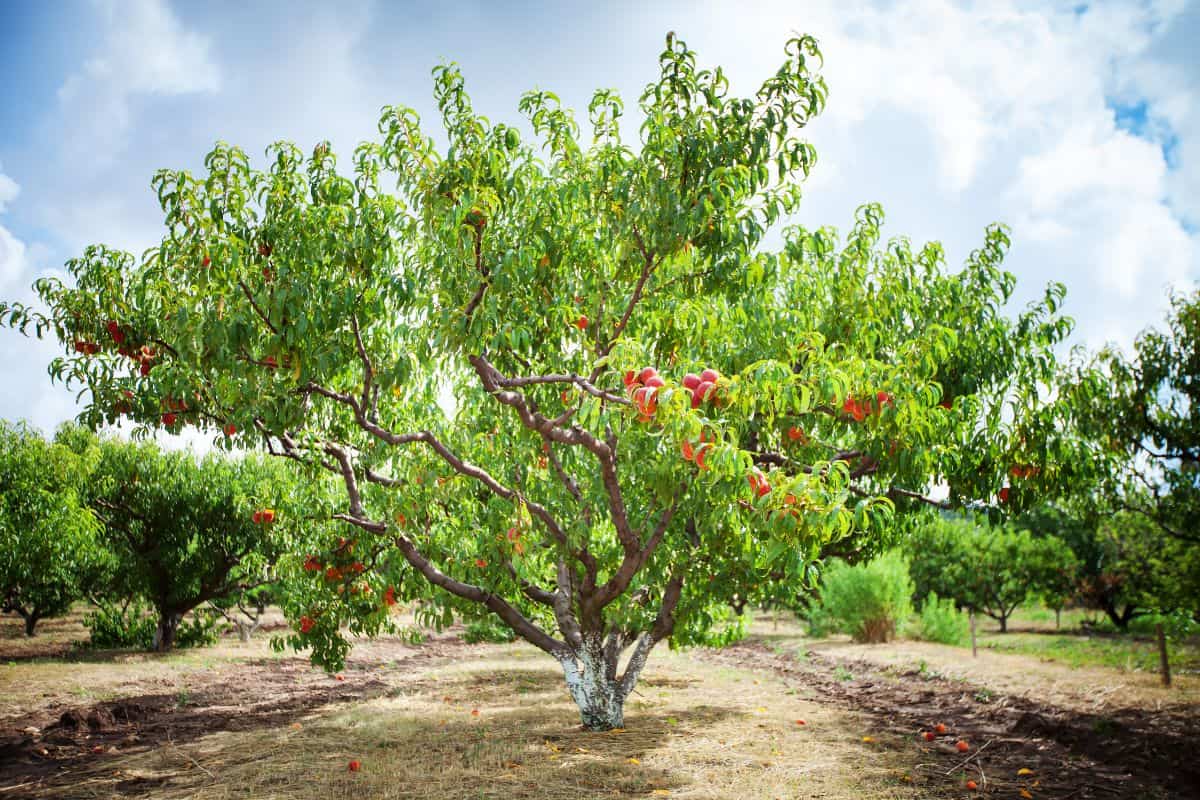Home>Gardening Basics>Getting Started>How Big Do Viburnum Shrubs Grow


Getting Started
How Big Do Viburnum Shrubs Grow
Published: October 22, 2023
Discover how big Viburnum shrubs can grow and get started with your own garden project. Find useful tips and advice on planting and caring for these beautiful shrubs.
(Many of the links in this article redirect to a specific reviewed product. Your purchase of these products through affiliate links helps to generate commission for Chicagolandgardening.com, at no extra cost. Learn more)
Table of Contents
Introduction
Welcome to the world of Viburnum shrubs! Whether you’re a seasoned gardener or just starting out with your green thumb, these versatile plants are sure to add beauty and charm to your outdoor space. With their stunning foliage, fragrant flowers, and attractive berries, Viburnum shrubs are a popular choice for landscapes and gardens.
But before you dive into planting and caring for Viburnum shrubs, it’s essential to understand their growth habits and requirements. By gaining insight into these factors, you’ll be better equipped to create an optimal growing environment and enjoy the full potential of these remarkable plants.
In this article, we will explore the various aspects of Viburnum shrubs, including their growth habits, optimal conditions for growth, common varieties, pruning and maintenance tips, and potential problems and pests. By the end, you’ll have a comprehensive understanding of how to care for these plants and ensure their healthy development.
Whether you’re looking to plant Viburnum shrubs as a decorative focal point in your garden or as a privacy hedge, this guide will provide you with all the necessary information to get started. So, put on your gardening gloves and let’s dive into the world of Viburnum shrubs!
Understanding Viburnum Shrubs
Viburnum shrubs belong to the Viburnum genus, which is a diverse group of flowering plants that fall under the Adoxaceae family. These woody plants are renowned for their outstanding beauty and versatility. With over 150 species to choose from, Viburnum shrubs come in various sizes, shapes, and forms, making them suitable for a wide range of landscaping purposes.
One of the defining characteristics of Viburnum shrubs is their foliage, which can be evergreen or deciduous, depending on the species. The leaves often have a glossy texture and an attractive shade of green or even variegated patterns. Some species undergo dramatic changes in color throughout the seasons, with vibrant reds and purples in the fall.
In addition to their foliage, Viburnum shrubs are well-known for their stunning flowers, which often appear in clusters or corymbs. These flowers can range in color from white, pink, and cream to deep red or even yellow. Not only are these blossoms visually captivating, but they also emit a delightful fragrance, attracting bees, butterflies, and other pollinators to your garden.
Another notable feature of Viburnum shrubs is their fruit. After the flowers fade, many species produce vibrant berries, which can range in color from red, orange, and black to blue or purple. These berries not only add visual interest to the shrub but also serve as a food source for birds and wildlife.
When it comes to size, Viburnum shrubs can vary greatly. Some species remain relatively compact, reaching heights of only a few feet, while others can grow into large, multi-stemmed shrubs or even small trees, towering at over 15 feet tall. This variability in size makes Viburnum shrubs suitable for various landscaping needs, whether you’re looking for a low hedge, a focal point, or a backdrop for your garden.
Whether you choose a Viburnum dentatum, Viburnum opulus, or Viburnum plicatum, understanding the basic characteristics of Viburnum shrubs is crucial to ensure their successful cultivation in your garden. By appreciating their foliage, flowers, fruits, and growth habits, you’ll be able to select the right species and create a visually appealing and diverse outdoor space.
Factors Affecting Viburnum Shrubs’ Growth
Like any other plant, the growth and development of Viburnum shrubs are influenced by various factors. Understanding these factors is crucial to ensure optimal growth and vitality. Here are some key factors that can impact the growth of Viburnum shrubs:
- Light: Viburnum shrubs generally thrive in full sun to partial shade. The amount of sunlight they receive directly affects their growth and flowering. Most species prefer at least six hours of direct sunlight per day. If planted in too much shade, they may not bloom as prolifically or may have less vigorous growth.
- Soil: Viburnum shrubs prefer moist, well-draining soil. They can tolerate a variety of soil types, including sandy, loamy, or clay soils, but they perform best in fertile, slightly acidic to neutral soil. Amending the soil with organic matter before planting can help improve drainage and provide essential nutrients.
- Water: Consistent and adequate water is crucial for the proper growth of Viburnum shrubs, especially during the establishment phase. They prefer moist but not waterlogged soil. Regular watering, especially during dry periods, helps prevent stress and promotes healthy growth.
- Temperature and Climate: Different species of Viburnum shrubs have varying temperature and climate preferences. Some are more cold-hardy, while others thrive in warmer regions. Understanding the specific requirements of the Viburnum species you’re cultivating will ensure their successful growth in your particular climate.
- Pruning: Pruning plays a vital role in maintaining the shape, size, and overall health of Viburnum shrubs. Regular pruning helps remove dead or damaged branches, encourages new growth, and enhances air circulation. It is best to prune Viburnum shrubs in late winter or early spring before the new growth begins.
While these factors play a significant role in the growth of Viburnum shrubs, it’s important to remember that each species may have specific preferences and tolerances. It is advisable to research and understand the specific needs of the Viburnum variety you’re cultivating to create the ideal environment for their growth.
By taking into account these factors and providing the appropriate growing conditions, you can ensure that your Viburnum shrubs thrive and create a stunning display of foliage, flowers, and berries in your garden.
Optimal Growing Conditions for Viburnum Shrubs
To ensure the healthy growth and development of Viburnum shrubs, it’s essential to provide them with the optimal growing conditions. Consider the following factors when creating the ideal environment for your Viburnum plants:
- Sunlight: Most Viburnum shrubs thrive in full sun to partial shade. They require at least six hours of direct sunlight each day to promote healthy growth and abundant flowering. However, some species can tolerate more shade than others, so it’s crucial to research the specific light requirements of the Viburnum variety you’re cultivating.
- Soil: Viburnum shrubs prefer moist, well-draining soil. Ideally, the soil should be fertile and slightly acidic to neutral in pH. If your soil is heavy clay or lacking in organic matter, consider amending it with compost or well-rotted manure to improve drainage and provide essential nutrients.
- Water: Adequate moisture is essential for the successful growth of Viburnum shrubs. While they prefer moist soil, they should not be constantly waterlogged. Water your Viburnum shrubs deeply and regularly, especially during dry periods or when they are newly planted and establishing their root systems. Mulching around the base of the shrubs can help retain moisture and prevent weed competition.
- Temperature: Viburnum shrubs have varying temperature preferences depending on the species. Some are more cold-hardy and can tolerate freezing temperatures, while others thrive in warmer climates. It is important to select Viburnum varieties that are suitable for your specific climate. If you live in an area with harsh winters, consider planting cold-hardy species to ensure their survival and growth.
- Spacing: Proper spacing is essential to give Viburnum shrubs room to grow and spread. Planting them too close together can lead to overcrowding and competition for resources. So make sure to follow the recommended spacing guidelines for the specific Viburnum species you’re cultivating.
By providing the optimal growing conditions, you can ensure that your Viburnum shrubs thrive and reach their full potential. Remember to consider the specific requirements of the Viburnum variety you are planting and make any necessary adjustments to create the ideal environment for their growth.
Common Varieties of Viburnum Shrubs
Viburnum shrubs offer a wide variety of species and cultivars, each with its unique characteristics and appeal. Here are some of the common varieties of Viburnum shrubs:
- Viburnum opulus (European Cranberry Bush): This deciduous shrub is known for its attractive lobed leaves and showy white flowers that appear in spring. It produces clusters of bright red berries in the fall, which add a pop of color to the landscape.
- Viburnum dentatum (Arrowwood Viburnum): Native to North America, this shrub is popular for its beautiful glossy foliage that turns vibrant shades of burgundy in the fall. It produces flat-topped clusters of creamy-white flowers in late spring, followed by blue-black berries.
- Viburnum plicatum (Japanese Snowball Viburnum): This stunning shrub is characterized by its horizontal-tiered branches and large, round clusters of white flowers that resemble snowballs. Its leaves turn a beautiful reddish-purple in the autumn, providing an extra burst of color.
- Viburnum tinus (Laurustinus Viburnum): This evergreen shrub is cherished for its dark green, leathery leaves and delicate pinkish-white flowers that bloom from late winter to spring. It produces metallic blue berries that persist throughout the year.
- Viburnum trilobum (American Cranberry Bush): This deciduous shrub is valued for its three-lobed leaves and clusters of white flowers in spring. It bears bright red berries that resemble cranberries and are often used in culinary preparations.
- Viburnum carlesii (Koreanspice Viburnum): This shrub is beloved for its highly fragrant pinkish-white flowers that emerge in early spring. Its dark green leaves turn shades of purple and red in the fall, providing a stunning autumn display.
These are just a few examples of the numerous Viburnum shrub varieties available. Each offers distinct qualities, from stunning foliage and showy flowers to attractive berries and vibrant fall colors. Selecting the right variety for your garden will depend on your desired aesthetic and the specific growing conditions of your landscape.
Whether you prefer a compact shrub like Viburnum davidii or a larger variety like Viburnum prunifolium, there is a Viburnum shrub to suit any garden style and climate. Explore the many options available and incorporate these versatile plants into your outdoor space for year-round beauty.
Pruning and Maintenance of Viburnum Shrubs
Proper pruning and maintenance are essential for the health and appearance of Viburnum shrubs. By following a few simple guidelines, you can ensure that your shrubs remain in excellent condition. Here are some tips for pruning and maintaining Viburnum shrubs:
- Timing: Pruning should ideally be done in late winter or early spring before new growth begins. This timing allows the shrubs to recover quickly from the pruning and promotes healthy growth throughout the growing season.
- Remove Dead or Diseased Branches: Start by inspecting the shrub and removing any dead, damaged, or diseased branches. This will improve the overall health of the shrub and prevent the spread of diseases or pests.
- Thinning: To improve air circulation and reduce the risk of disease, selectively prune branches that are crossing, rubbing, or overcrowded. Thinning the shrub opens up the canopy, allowing light to reach the inner branches and promoting better growth.
- Shaping: If you wish to maintain a particular shape or size, selectively prune branches to achieve the desired form. This is especially important for formal hedges or topiaries created using Viburnum shrubs.
- Prune Flowering Viburnums After Blooming: If you have a Viburnum shrub that blooms in spring, such as Viburnum plicatum or Viburnum carlesii, prune it immediately after the flowers fade. This ensures that you don’t accidentally remove next year’s flower buds.
- Pruning Young Viburnum Shrubs: When pruning young Viburnum shrubs, focus on shaping and establishing a strong framework of branches. Remove any weak or crossing branches to encourage healthy growth and structure.
- Maintenance: Regular maintenance practices for Viburnum shrubs include watering during dry periods, especially when newly planted, and applying a layer of organic mulch around the base of the shrubs to retain moisture and suppress weeds. Fertilize the shrubs in the spring with a balanced slow-release fertilizer to provide essential nutrients for optimal growth.
It’s worth noting that not all Viburnum shrubs require extensive pruning. Some varieties have a naturally attractive growth habit and may require minimal pruning to maintain their shape. Always refer to specific pruning guidelines for the particular Viburnum species you’re cultivating.
By following these pruning and maintenance tips, you can keep your Viburnum shrubs healthy, well-shaped, and visually appealing. Remember to periodically assess the shrubs’ growth and make necessary adjustments to ensure their long-term vitality and beauty in your garden.
Potential Problems and Pests for Viburnum Shrubs
While Viburnum shrubs are generally hardy and resilient, like any plant, they can face certain problems and be susceptible to pests. Being aware of these potential issues can help you identify and address them promptly, ensuring the health of your shrubs. Here are some common problems and pests that can affect Viburnum shrubs:
- Leaf Spot Diseases: Viburnum shrubs can be prone to leaf spot diseases caused by fungi. Symptoms include dark spots or lesions on the leaves, which can eventually lead to defoliation. To control leaf spot diseases, practice good sanitation by removing and disposing of infected leaves, and avoid overhead watering.
- Powdery Mildew: Powdery mildew is a fungal disease that appears as a white powdery coating on the leaves. It can hinder the growth and overall health of Viburnum shrubs. Prune affected branches and ensure proper air circulation to prevent the development and spread of powdery mildew.
- Aphids: Aphids are small, sap-sucking insects that can infest Viburnum shrubs. They cluster on the undersides of leaves, causing yellowing, curling, and stunted growth. Regularly inspect your shrubs for aphids and use natural predators or insecticidal soap to control their population.
- Scales: Scale insects are another common pest that can affect Viburnum shrubs. They appear as small raised bumps on the stems and leaves, sucking sap from the plant. Prune heavily infested branches and consider using horticultural oil or insecticidal soap to control scales.
- Viburnum Beetle: The Viburnum Beetle is a notorious pest that primarily feeds on the leaves of Viburnum shrubs. The larvae skeletonize the leaves, causing significant damage. Handpicking the larvae or using insecticidal sprays before the adults emerge in the spring can help control the Viburnum Beetle population.
- Deer Damage: In areas with deer populations, Viburnum shrubs can be vulnerable to browsing damage. Deer are known to feed on the leaves and young shoots of Viburnum plants. Install fencing or use deer repellents to protect your shrubs from deer browsing.
Regularly monitoring your Viburnum shrubs for signs of problems or pests is crucial for maintaining their health and vitality. By promptly addressing any issues that arise, you can mitigate damage and ensure the long-term success of your shrubs.
Remember, prevention is key. Providing optimal growing conditions, practicing good sanitation, and promoting a healthy ecosystem in your garden can help minimize the likelihood of problems and pests affecting your Viburnum shrubs. When necessary, consult with a local horticulturist or extension service for guidance on specific control measures for your region.
Conclusion
Viburnum shrubs are undoubtedly a fantastic addition to any garden or landscape. With their stunning foliage, vibrant flowers, and attractive berries, they offer year-round beauty and appeal. By understanding the various aspects of Viburnum shrubs, such as their growth habits, optimal conditions, common varieties, pruning, and potential problems, you can ensure their successful cultivation and maintenance.
When choosing Viburnum shrubs for your garden, consider factors like light requirements, soil conditions, and climate suitability to select the right species or cultivars. Providing the optimal growing conditions, including proper sunlight, well-draining soil, and regular watering, will encourage healthy growth and vibrant floral displays.
Pruning and maintenance play a vital role in the health and appearance of Viburnum shrubs. Regularly thinning, shaping, and removing dead or diseased branches will maintain a well-structured and visually pleasing shrub. Additionally, being aware of potential problems and pests, such as leaf spot diseases, aphids, and Viburnum beetles, will enable you to promptly address them and preserve the shrubs’ health.
Remember to periodically assess your Viburnum shrubs’ growth and adjust care accordingly. Stay attentive to signs of distress, address issues promptly, and consult with local experts for specific recommendations based on your region’s climate and conditions.
With their versatility and beauty, Viburnum shrubs can transform your garden into a vibrant and inviting oasis. By providing the necessary care and attention, you can enjoy their stunning displays of foliage, flowers, and berries year after year. Whether you’re aiming for a striking focal point, a privacy hedge, or a charming addition to your landscape, Viburnum shrubs are sure to bring joy and beauty to your outdoor space.
